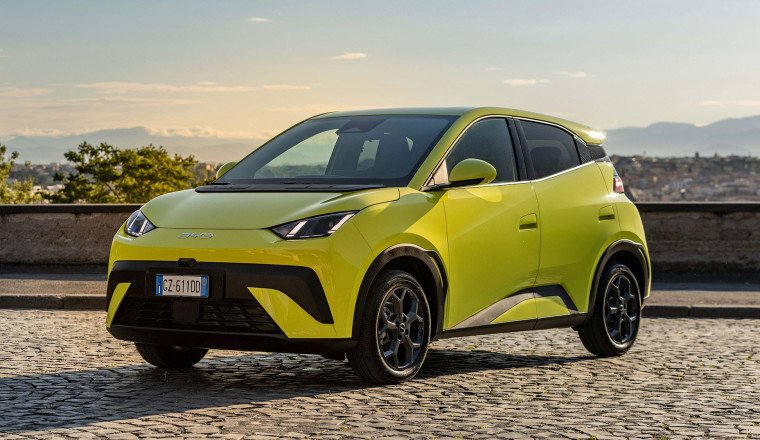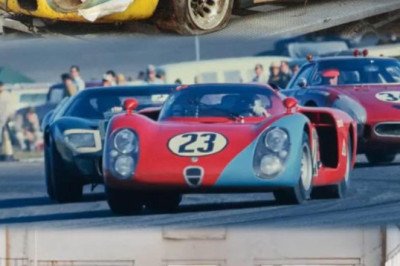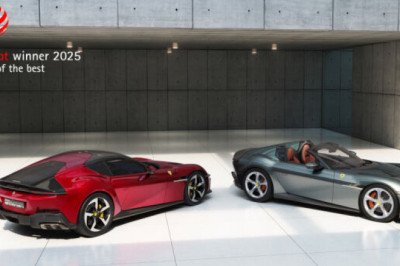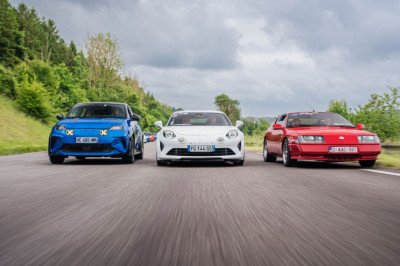
► BYD’s cheap and cheerful EV is finally here
► 200-mile driving range, stacks of equipment
► Prices starting of around £16,000
The small, affordable electric car segment is probably the most important corner of the new car market to conquer. Manufacturers are still grappling at the intersection between profitability and affordability – but whichever car maker can figure out how to win in this space first will own it for years before its rivals can catch up. And the BYD Dolphin Surf is shaping up to be a pretty serious player.
BYD has released more specs about its pint-sized urban hero – and they’re a long way ahead of other small EVs such as the Dacia Spring and Leapmotor T03. Try these on for size. The top-spec car will have a 43.2kWh battery pack, a maximum range of almost 200 miles and a price tag of €25,490 (around £21,500).
But it gets better the further down the range you descend. Step into to a more basic version of the Surf, with a smaller battery pack and less powerful electric motor, and you’ll can get the price down to just £16,000, making it ideally positioned to combat the £14,995 Spring and £15,995 T03. What’s more, the Surf offers a lot more cabin technology and it promises to be safer in an accident.
The cheapest Active model costs €18,990 in Europe (roughly £16,000). It has a 30kWh battery pack and an 87bhp electric motor, which BYD says is enough for a maximum range of 136 miles and a 0–62mph time of 11.1 seconds. These performance stats are far better than both versions of the Dacia Spring (the cheapest one takes 19.1 seconds to get to 62mph), while range is comparable.
Step up a rung to the BYD Dolphin Surf Boost and you’ll unlock the brand’s larger 43.2kWh battery which increases the maximum range to 200 miles. The Boost still gets the same motor as the Active though, which means 0–62mph takes 12.1 seconds due the extra weight of the battery. Prices for this variant start from €22,490 (just shy of £19,000).
The top-spec Comfort model features the same battery as the Boost, but it’s powering a punchier 154bhp electric motor – which BYD proudly states is the most powerful electric motor in the segment. Indeed, it has more than three times the power of the cheapest Spring, meaning it can shunt the Surf from 0–62mph in 9.1 seconds. Range doesn’t take a huge hit, either. The car’s official WLTP figure is 193 miles.
Charge times are identical across the range, as BYD increased the speed at which the bigger battery can accept electricity. Every version of the Dolphin Surf takes 30 minutes to charge from 10 to 80 percent capacity using a DC rapid charger, while a full charge using a slower 11kW wallbox takes three and half hours for the base model or five hours for the Boost and Comfort variants.
Standard equipment includes rear parking sensors, a rear-view camera, air conditioning, keyless entry, electrically adjustable side mirrors and a 10.1-inch infotainment system which, because this is BYD, can rotate between portrait and landscape at the touch of a button. Oh yeah, and that lairy green paint finish is the standard colour.
Boost models get 16-inch alloy wheels, electrically adjustable front seats, rain-sensing wipers and electrically folding door mirrors. The top-spec Comfort variant gains LED headlights, rear privacy glass, heated front seats, a wireless smartphone charger, tinted rear windows and exterior downlights under the door mirrors.
Every version of the Dolphin Surf also features a natty vehicle-to-load (V2L) system that allows you to use the energy in the car’s battery to power external appliances such as power tools, laptops, coffee machines or compact electric grills.
We don’t know for certain yet as Euro NCAP still hasn’t batted the car around its test facility. But BYD seems confident the Surf will get a good result, as it has plenty of high-strength steel in its body 68.2% (compared to 60% in the Leapmotor T03) and it sports the firm’s puncture-resistant Blade Battery technology, which greatly lowers the risk of the car catching fire if you manage to rattle its underside over a kerb at 70mph.
In addition to this passive safety, you get a lot of standard active safety technology, including lane-keeping assist, automatic emergency braking, intelligent adaptive cruise control and an emergency call function. We can even spy a driver monitoring camera in BYD’s press images. To frame that list with some context, that’s basically all the tech Euro NCAP berated Dacia for leaving off the Spring.
Well, BYD isn’t going anywhere any time soon. The brand’s executive vice president, Stella Li (below), is dead set on knocking established European OEMs off their perches. She said: ‘Our Q1 sales in 2025 will be bigger than the whole of last year in the UK.’ She then added: ‘BYD will offer 13 models in Europe within 18 months.’
Today, if you include the Dolphin Surf, BYD sells ten models in Europe – and they’ve all sprung onto the scene within the last two years. This aggressive product expansion will be joined by fierce growth in the UK dealer network, as the car maker intends to swell its retail footprint from 62 to 120 outlets by the end of 2025.
Proof, were it needed, that BYD is the Chinese car brand to watch. Where others are happy to talk about rampant expansion plans, it’s actually walking the walk and delivering real growth.
Luke is the Deputy Editor of our sister site Parkers, but he spends plenty of time writing news, reviews and features for CAR. He's been a motoring journalist since 2018, learning his craft on the Auto Express news desk before joining the Parkers/CAR team in 2022. When he isn't yoked to his laptop, he's tearing his hair out over his classic Mini restoration project or pinballing around the country attending heavy metal gigs.
By Luke Wilkinson
Deputy Editor of Parkers. Unhealthy obsession with classic Minis and old Alfas. Impenetrable Cumbrian accent















Facebook Conversations